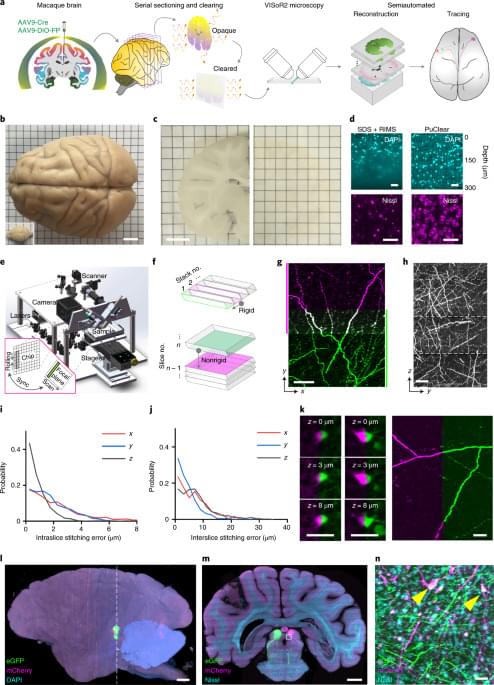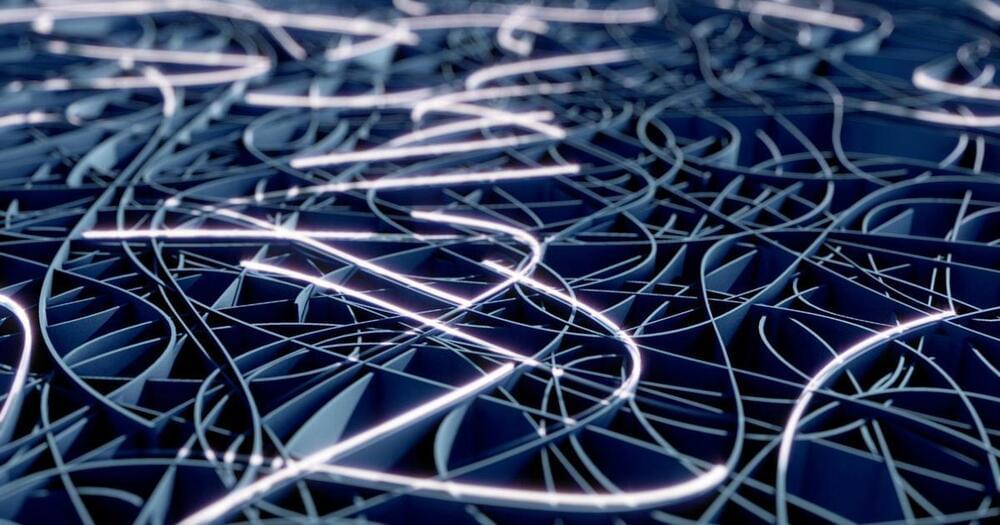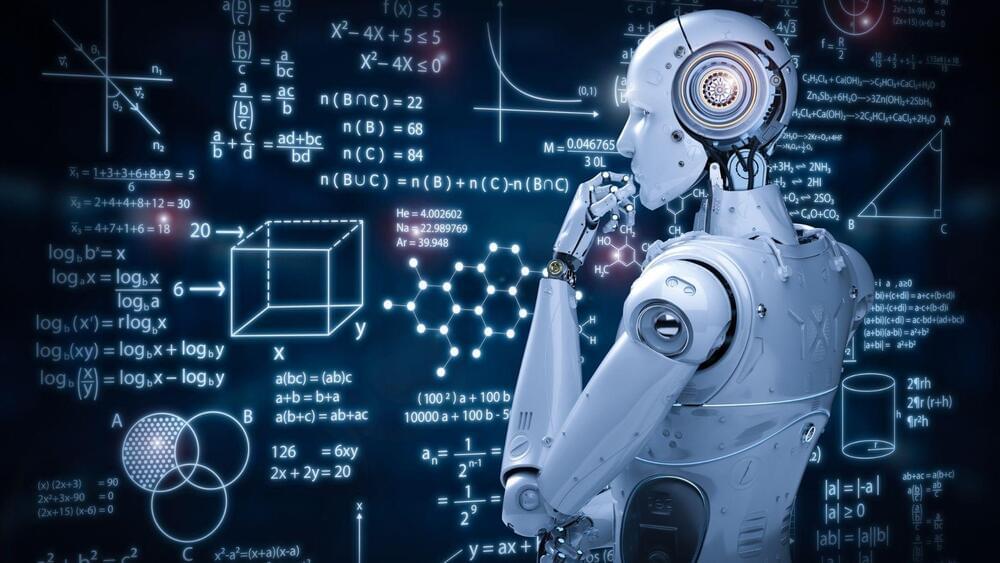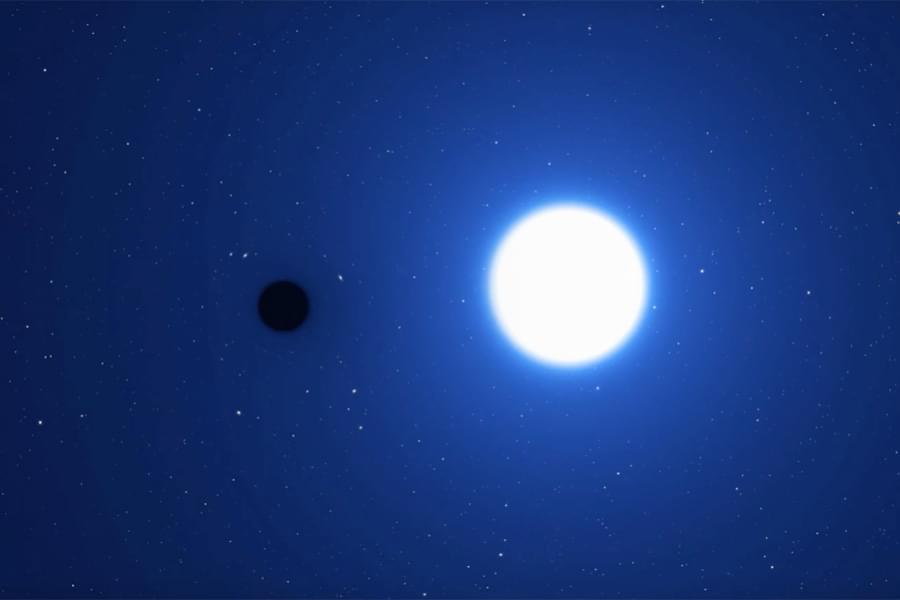A whole monkey brain is imaged at high resolution in 100 hours.


Patreon support: https://www.patreon.com/braininspired.
Free Video Series: Open Questions in AI and Neuroscience:
Show notes: https://braininspired.co/podcast/103/
Randal, Ken, and I discuss a host of topics around the future goal of uploading our minds into non-brain systems, to continue our mental lives and expand our range of experiences. The basic requirement for such a subtrate-independent mind is to implement whole brain emulation. We discuss two basic approaches to whole brain emulation. The “scan and copy” approach proposes we somehow scan the entire structure of our brains (at whatever scale is necessary) and store that scan until some future date when we have figured out how to us that information to build a substrate that can house your mind. The “gradual replacement” approach proposes we slowly replace parts of the brain with functioning alternative machines, eventually replacing the entire brain with non-biological material and yet retaining a functioning mind.
Randal and Ken are neuroscientists who understand the magnitude and challenges of a massive project like mind uploading, who also understand what we can do right now, with current technology, to advance toward that lofty goal, and who are thoughtful about what steps we need to take to enable further advancements.
Timestamps.
0:00 — Intro.
6:14 — What Ken wants.
11:22 — What Randal wants.
22:29 — Brain preservation.
27:18 — Aldehyde stabilized cryopreservation.
31:51 — Scan and copy vs. gradual replacement.
38:25 — Building a roadmap.
49:45 — Limits of current experimental paradigms.
53:51 — Our evolved brains.
1:06:58 — Counterarguments.
1:10:31 — Animal models for whole brain emulation.
1:15:01 — Understanding vs. emulating brains.
1:22:37 — Current challenges.


We are aware of how skewed our perception of reality is. How we see the world is shaped by our senses, our societies, and our knowledge.
And you may want to rethink your belief that science will always provide you with objective reality.
Physicists can now verify a hypothesis that Nobel Prize winner Eugen Wigner initially put out in 1961.

Ground-breaking research at Tel Aviv University successfully eradicated glioblastoma, a deadly form of brain cancer. The researchers achieved the result by developing a strategy based on their finding of two crucial mechanisms in the brain that promote tumor growth and survival: one shields cancer cells from the immune system, while the other provides the energy needed for rapid tumor growth. The research discovered that astrocytes, which are brain cells, regulate both methods, and that when they aren’t there, tumor cells die and are eliminated.
Rita Perelroizen, a Ph.D. student, served as the study’s lead researcher. She collaborated with Professor Eytan Ruppin of the National Institutes of Health (NIH) in the United States and was supervised by Dr. Lior Mayo of the Shmunis School of Biomedicine and Cancer Research and the Sagol School of Neuroscience at Tel Aviv. The study was recently published in the journal Brain and was highlighted with scientific commentary.

Desalination plants discharge brine and wastewater, which can also kill nearby aquatic life if the process is not done properly. And generating the large quantity of energy that the plants consume has its own environmental impacts until it can be done carbon-free, which is still years off in most cases.
Unaffordable Water From Costly Plants
Cost is another major hurdle. In most areas, the cost of ocean desalination is projected to remain considerably higher than the cost of feasible alternatives such as conservation for the next several decades, the timeline that utilities use when planning new investments. My colleagues and I found this in our research comparing water supply alternatives for Huntington Beach, even though we made favorable assumptions about ocean desalination costs.

But black holes do have gravity, and they know how to use it. If a black hole has a stellar companion, and they orbit each other closely enough, the former can strip some of the gas from the star. The gas falling into the black hole heats up and shines in high-energy radiation. Astronomers have found more than 50 such systems in the Milky Way.
However, when a black hole and its companion star orbit each other at a greater distance, the star remains whole. The black hole is then dormant and much more challenging to spot. To find it, one has to search for wobbling stars whose peculiar motion could be due to an unseen dark companion.
This is how a team of astronomers discovered the newest black hole candidate, which they call Gaia BH1. (The study, which is under review, is available here). Although it isn’t the first proposed candidate of its kind, it seems to be the most compelling to date.

In a new study that could improve the therapeutic efficacy of deep-brain stimulation (DBS) for psychiatric disorders such as depression, a team of scientists shows that, when DBS is applied to a specific brain region, it improves patients’ cognitive control over their behavior by increasing the power of a specific low-frequency brain rhythm in their prefrontal cortex.
The findings, published April 4 in Nature Communications, suggest that the increase in “theta” rhythms, readily detectable in EEG recordings, could provide neurosurgeons and psychiatrists with the reliable, objective and rapid feedback they’ve needed to properly fine-tune the placement and “dosage” of DBS electrical stimulation. In Parkinson’s disease, where DBS has been most successful, that kind of feedback is available through a reduction in a patient’s tremors. But for depression or obsessive-compulsive disorder, symptoms can be more subtle, subjective and slowly emergent.
“This is a major step forward for psychiatric brain stimulation,” said Alik Widge, the lead and corresponding author on the paper. Widge began the work while a clinical fellow at the Picower Institute for Learning and Memory at MIT and a research fellow at Massachusetts General Hospital (MGH). He is now an Assistant Professor of Psychiatry at the University of Minnesota Medical School. “This study shows us a specific mechanism of how DBS improves patients’ brain function, which should let us better identify who can benefit and how to optimize their individual treatment.”